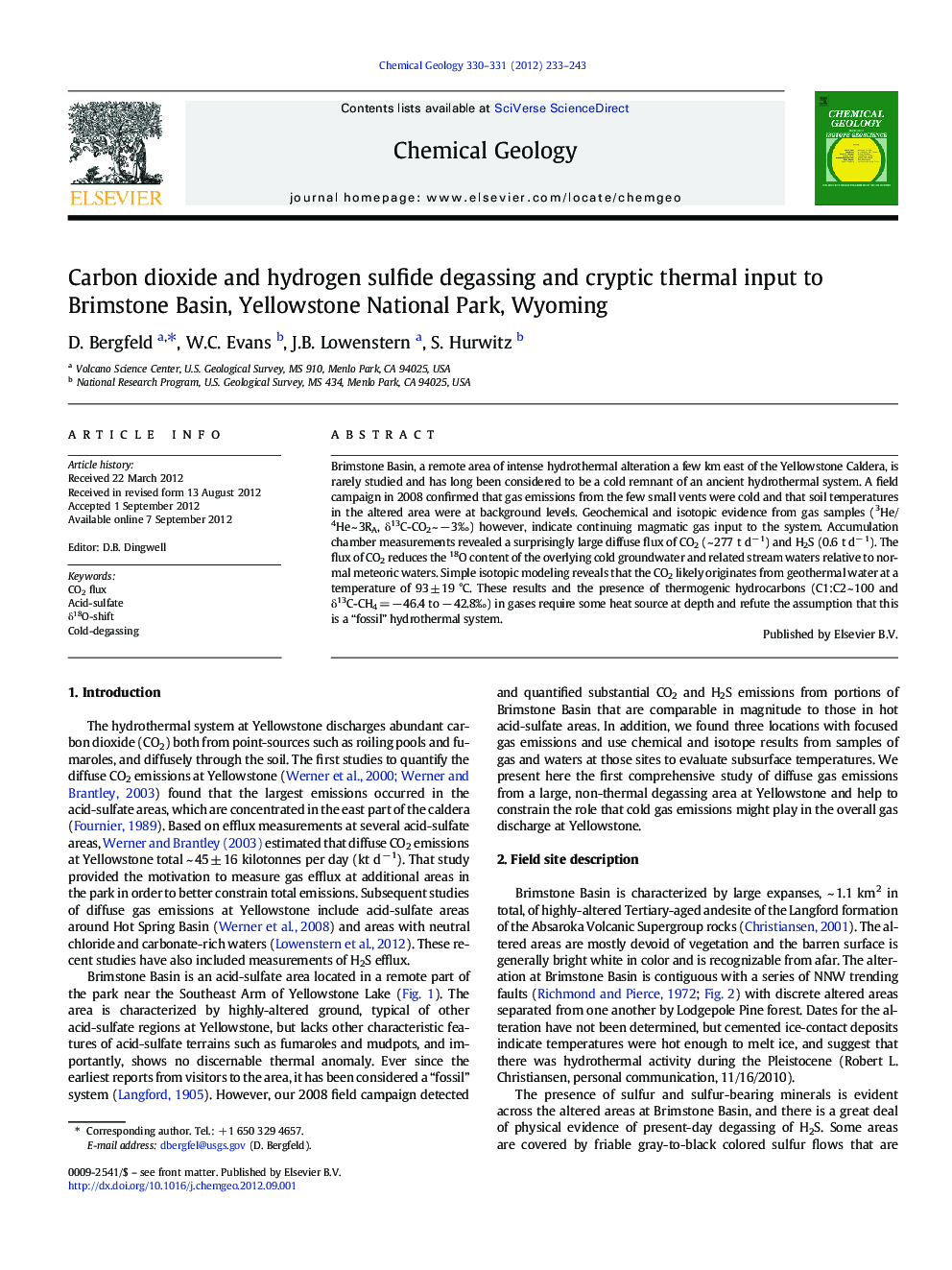| کد مقاله | کد نشریه | سال انتشار | مقاله انگلیسی | نسخه تمام متن |
|---|---|---|---|---|
| 4699251 | 1637635 | 2012 | 11 صفحه PDF | دانلود رایگان |

Brimstone Basin, a remote area of intense hydrothermal alteration a few km east of the Yellowstone Caldera, is rarely studied and has long been considered to be a cold remnant of an ancient hydrothermal system. A field campaign in 2008 confirmed that gas emissions from the few small vents were cold and that soil temperatures in the altered area were at background levels. Geochemical and isotopic evidence from gas samples (3He/4He ~ 3RA, δ13C-CO2 ~ − 3‰) however, indicate continuing magmatic gas input to the system. Accumulation chamber measurements revealed a surprisingly large diffuse flux of CO2 (~ 277 t d− 1) and H2S (0.6 t d− 1). The flux of CO2 reduces the 18O content of the overlying cold groundwater and related stream waters relative to normal meteoric waters. Simple isotopic modeling reveals that the CO2 likely originates from geothermal water at a temperature of 93 ± 19 °C. These results and the presence of thermogenic hydrocarbons (C1:C2 ~ 100 and δ13C-CH4 = − 46.4 to − 42.8‰) in gases require some heat source at depth and refute the assumption that this is a “fossil” hydrothermal system.
► About 277 tonnes of magmatic CO2 discharge from Brimstone Basin each day.
► Surface waters show large negative shifts in δ18O contents.
► Cold gas emissions at Brimstone Basin have a clear connection to a heat source.
Journal: Chemical Geology - Volumes 330–331, 10 November 2012, Pages 233–243